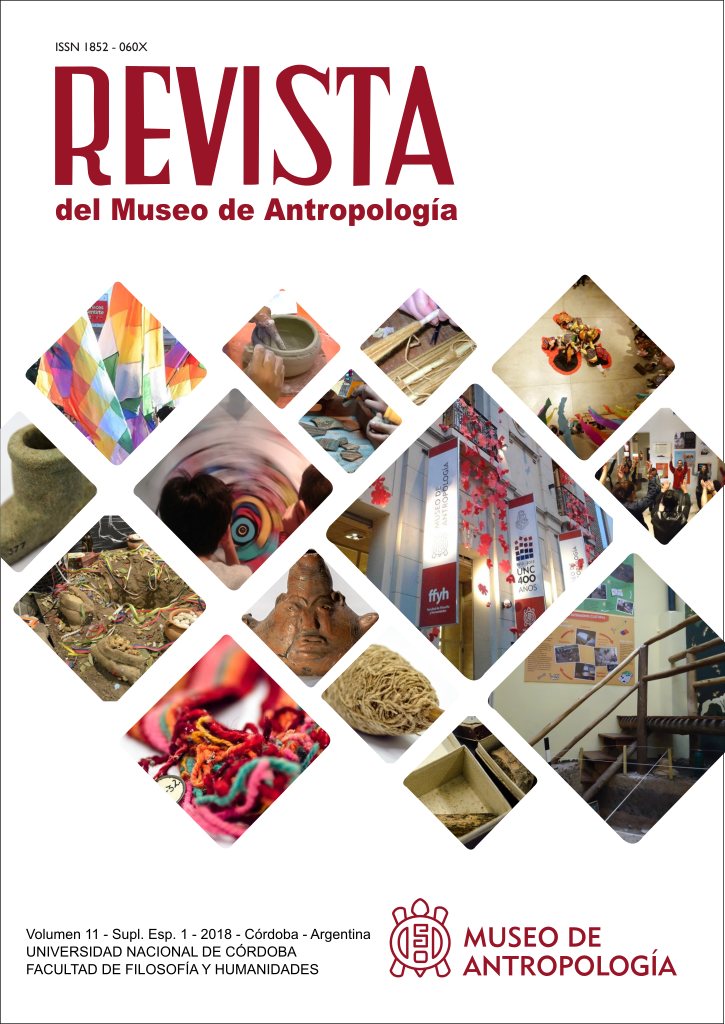Voices in diaspora: how immigrant children tell their stories
DOI:
https://doi.org/10.31048/1852.4826.v11.n0.21462Keywords:
narrative performance, children, oral narratives, immigrants, schoolAbstract
Based on ethnographic research conducted during 12 months at two elementary public schools in Paris, focusing a special class to France newcomers (EPE2A), this article intends to know how the experiences of these children are being organized through oral and written narratives. Although these children come from different countries and social classes, belonging to distinct ethnic groups and with radically different religious, they live daily in this classroom where the unique form of oral communication is the French language (still unfamiliar for the majority). In that manner, tell and share stories becomes a challenge to each student. This paper analyzes how and what immigrant children tell in such situation of intense multicultural contact.Downloads
References
Alderson, P. (2005). As crianças como pesquisadoras: os efeitos dos direitos de participação sobre a metodologia de pesquisa. Educação e Sociedade. Campinas, v. 26, n. 91, p. 419-442.
Bauman, R. (1977). Verbal Art as Performance. Rowley, Mass: Newbury House Publishers, 1977.
Bauman, R.(2004). A World of Others’ Words. Cross-Cultural Perspectives on Intertextuality. Malden-Oxford, Blackwell Publishing.
Bauman, R.; Briggs, C. (1990) Poetics and Performance as Critical Perspectives on Language and Social Life. Annual Review of Anthropology. Palo Alto, Annual Reviews, v. 19, p. 59-88.
Briggs, C. (1996). Introduction. In: BRIGGS, Charles (ed.) Disorderly Discourse - narrative, conflict and inequality. New York/Oxford, Oxford University Press.
Begnami, P. S. (2010). Crianças: os sujeitos das pesquisas antropológicas. Revista UNAR, Araras (SP), v. 4, n. 1, p. 2-12.
CASNAV. Les élèves nouvellement arrivés en France sans maîtrise suffisante de la langue française ou des apprentissages. Enquête statistique Premier degré Année scolaire 2009-2010. Disponível em: http://18b-gouttedor.scola.ac-paris.fr/IMG/pdf/statistiques_CLIN_09-_10.pdf Acesso em 06.10.2014
Coletta, J-M. (1998) Les conduites narratives chez l’enfant : une approche étho-linguistique et développementale. 6ème Congrès de l’International Pragmatics Association, Reims, juillet 1998.
Francols, N. Avec un ENAF en classe ordinaire. Cahiers Pédagogiques. N°473. Dossiê Enfants d’ailleurs, élèves en France. Disponível em: http://www.cahiers-pedagogiques.com/Avec-un-Enaf-en-classe-ordinaire
Gautier, M. (2005/2006) L'éclectisme de la classe d'initiation (CL.IN.) Mémoire pour le Concours de recrutement: Professeur des écoles. IUFM de Bourgogne.
Girardello, G. (2007). Voz, presença e imaginação: a narração de histórias e as crianças pequenas. In: FRITZEN, Celdon; CABRAL, Gladir S. (orgs.) Infância: imaginação e educação em debate. Campinas/SP: Papirus, 2007. p. 39-58.
Hall, S. (2003). Da Diáspora – identidades e mediações culturais. Belo Horizonte: Ed. da UFMG.
Hartmann, L. (2015). Equilibristas, viajantes, princesas e poetas: performances orais e escritas de crianças narradoras. Boitatá - Revista do GT de Literatura Oral e Popular da ANPOLL. UEL, Londrina, n. 20, p. 48-67.
Hymes, D. (1975). Breakthrough into Performance. In: BEN-AMOS, Dan; GOLDSTEIN, Kenneth S. (orgs.) Folklore – Performance and Communication. Paris: Mouton.
Ingold, T. (2001). From the transmission of representations to the education of attention. In: H. Whitehouse (ed.), The Debated Mind: evolutionary psychology versus ethnography. Oxford: Berg, 2001, p. 113-153.
Langdon, E.r J. (1996). Performance e Preocupações Pós-Modernas em Antropologia. Antropologia em Primeira Mão. Florianópolis, PPGAS/UFSC. N. 11, 1996.
Mesmin, C. et alii. (1995). Psychothérapie des enfants de migrants. Paris : La Pensée Sauvage, 1995.
Montandon, C.; Longchamp, P. (2007). Você disse autonomia? Uma breve percepção da experiência das crianças. Perspectiva. Florianópolis, v. 25, n. 1, p. 105-126.
Raposo, P. (2013). No Performance´s Land? Interrogações contemporâneas para uma teoria da performance. In: DAWSEY, J.; RAPOSO, P.; FRADIQUE, T.; CARDOSO, V, Z. (orgs.). A Terra do Não Lugar Diálogos entre Antropologia e Performance. Florianópolis, Ed. da UFSC.
Rodari, G. (1997). Grammaire de L´Immagination. Paris: Rue du Monde.
Sarmento, M.J. (2003). Imaginário e culturas da infância. Cadernos de Educação, Pelotas, v. 12, n. 21, 2003, p. 51-69.
Skliar, C. (2003). A educação e a pergunta pelos Outros: diferença, alteridade, diversidade e os outros “outros”. Ponto de Vista, Florianópolis, n.05, 2003, p. 37-49.
Vasseur, M.T. (2003). En CLIN, l’apprentissage du français passe par la socialisation en français. Linx, 49, 2003, p. 125-140.
Downloads
Published
Issue
Section
License
Those authors who have publications with this Journalaccept the following terms:
a. Authors will retain their copyrights and guarantee the journal the right of first publication of their work, which will be simultaneously subject to the Creative Commons Attribution License (Licencia de reconocimiento de Creative Commons) that allows third parties to share the work as long as its author and his first publication in this journal.
b. Authors may adopt other non-exclusive licensing agreements for the distribution of the version of the published work (eg, deposit it in an institutional electronic file or publish it in a monographic volume) provided that the initial publication in this journal is indicated.
c. Authors are allowed and recommended to disseminate their work on the Internet (eg in institutional telematic archives or on their website) before and during the submission process, which can lead to interesting exchanges and increase citations of the published work. (See The Effect of Open Access - El efecto del acceso abierto)












